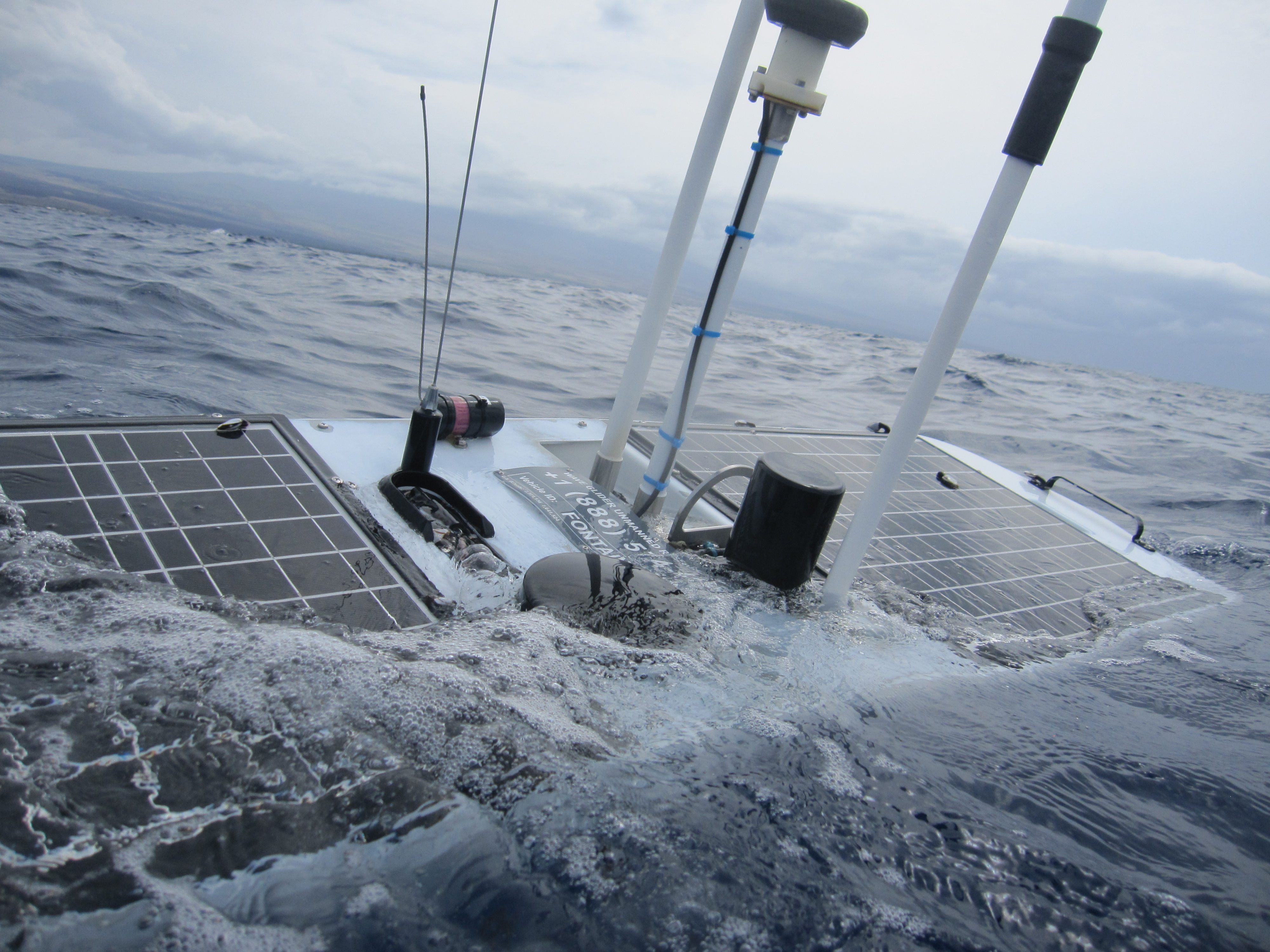Ocean-faring Robot Cashes in on Offshore Oil and Gas
Liquid Robotics is betting that autonomous vehicles will emerge as the best way to troll the oceans to gather data.

The Silicon Valley-based company yesterday raised $45 million in a series E round to grow the company’s sales and services around what it calls “high-value ocean data services” in research, defense, and oil and gas exploration.
Its Wave Glider marine robot, which resembles a stubby surfboard from below, can run for months to monitor ocean conditions, such as weather, current speed, and water temperature and salinity. Last December, it set a world record by completing a 9,000 nautical mile journal across the Pacific Ocean in a trip that lasted over a year. The company says it has over 150 deployed at sea.
Its data-gathering sensors, GPS, and on-board computers are powered by two standard solar panels attached to the board’s surface. Its ability to propel itself is done by a series of fins attached to a cable about 20 feet below the board. As the waves move up and down, the fins flex back and forth and move the vehicle forward. Because it’s connected to a satellite network, it can be piloted remotely.
The robots are used for taking marine data for researchers or to monitor locations, such as harbors, for security. Liquid Robotics has also found a willing audience of customers in the oil and gas industry to aid in offshore exploration. Last year, the company set up a joint venture with Schlumberger called Liquid Robotics Oil and Gas based in Houston, Texas.
Torpedo-shaped remotely-operated vehicles (ROVs) and autonomous underwater vehicles (AUVs) have been used with people on ships for years to survey undersea regions before drilling or to monitor equipment, such as pipelines. The Wave Glider is less expensive to operate, since it doesn’t require a boat to be deployed, and can operate for longer periods, the company says. Its sensors can gather oceanographic data, such as wave height, and detect seeps of existing wells.
In the field of scientific research, too, the Wave Glider’s ability to roam autonomously for months without having to refuel could transform how oceanographic experiments are conducted, since battery life on AUVs is a serious limitation. But given the deep pockets of the oil and gas industry, autonomous marine robots may find their biggest customer surveying the seas for drillers.
Keep Reading
Most Popular
Large language models can do jaw-dropping things. But nobody knows exactly why.
And that's a problem. Figuring it out is one of the biggest scientific puzzles of our time and a crucial step towards controlling more powerful future models.
The problem with plug-in hybrids? Their drivers.
Plug-in hybrids are often sold as a transition to EVs, but new data from Europe shows we’re still underestimating the emissions they produce.
Google DeepMind’s new generative model makes Super Mario–like games from scratch
Genie learns how to control games by watching hours and hours of video. It could help train next-gen robots too.
How scientists traced a mysterious covid case back to six toilets
When wastewater surveillance turns into a hunt for a single infected individual, the ethics get tricky.
Stay connected
Get the latest updates from
MIT Technology Review
Discover special offers, top stories, upcoming events, and more.